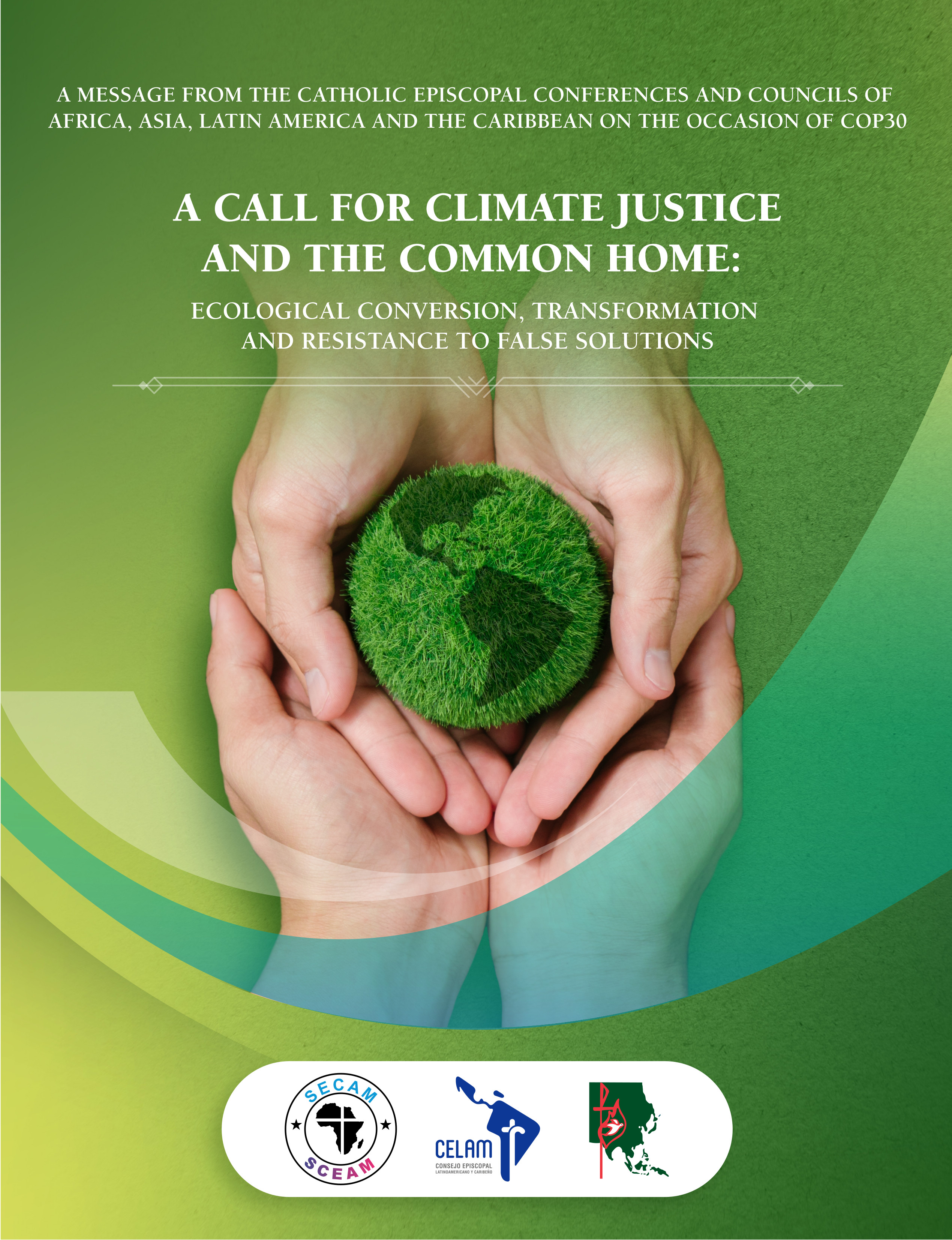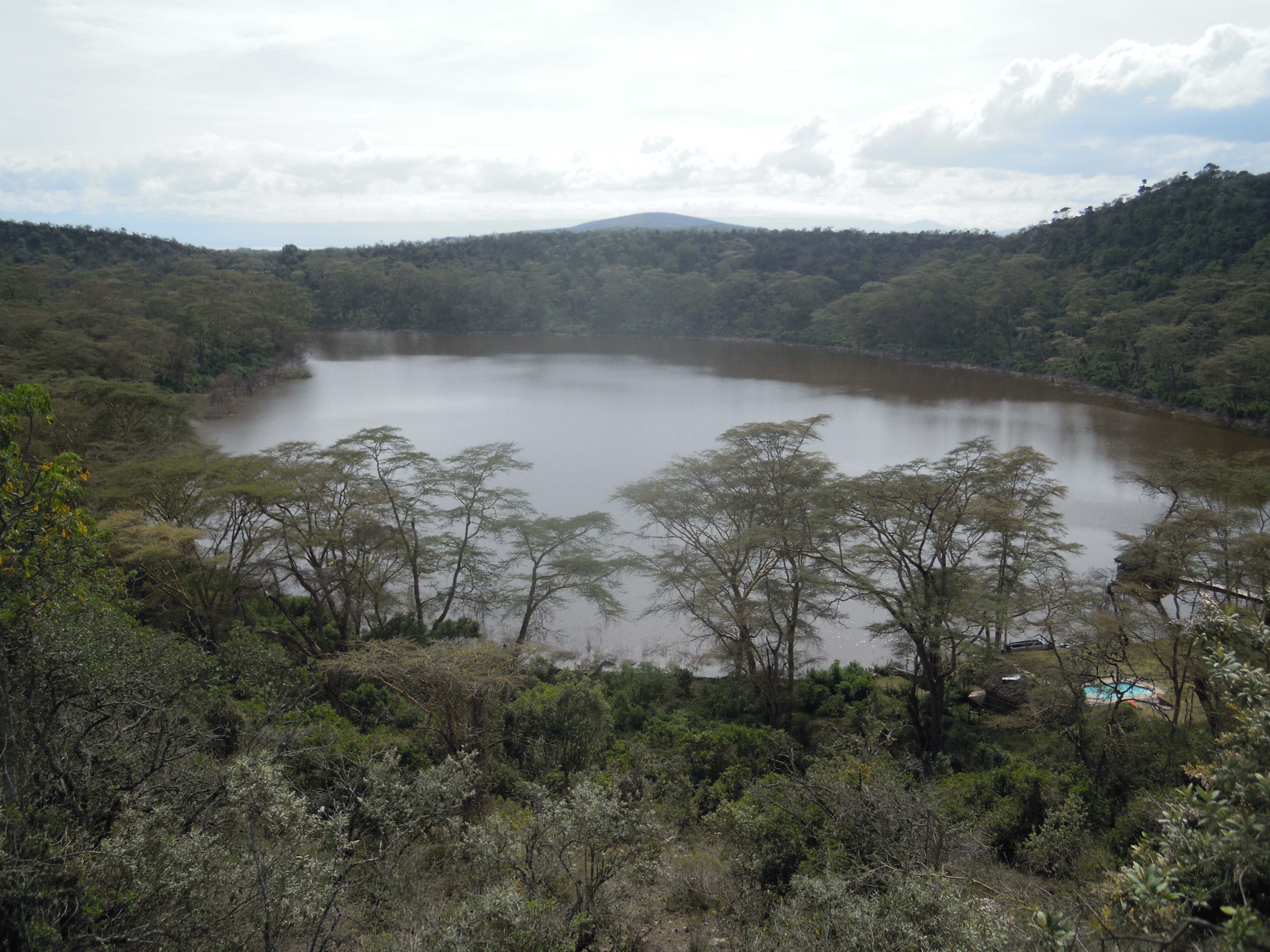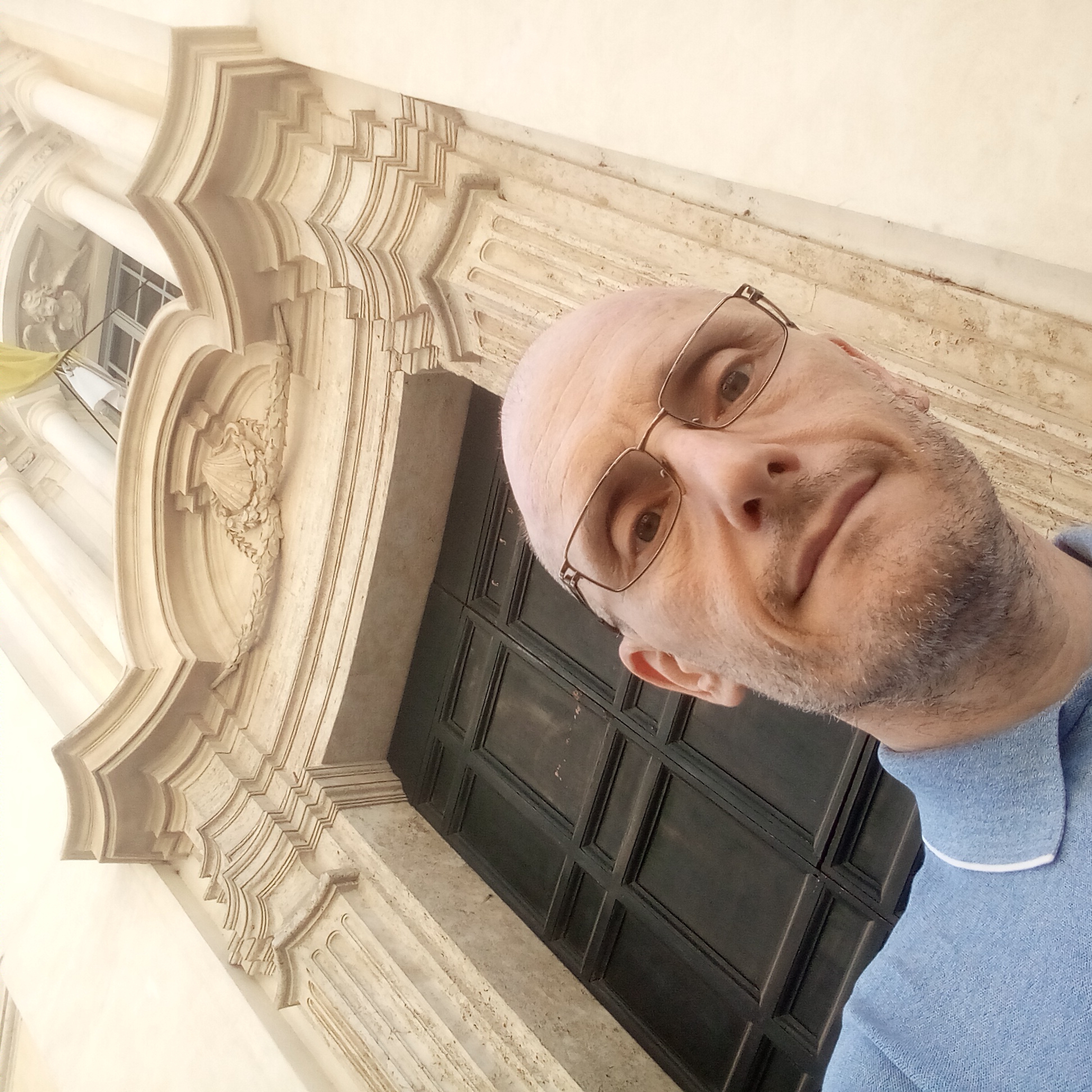The REPAM Experience
In his speech to the bishops of Brazil on July 27, 2013, Pope Francis pointed out the fragility of the ecclesial networks in the country. This applies especially to the Amazon region, for two reasons. On the one hand, the structural precariousness of the pastoral teams, with a shortage of missionaries, scarcity of financial means, isolation and communication difficulties. On the other, the dioceses and other local ecclesial structures suffer from a limited perspective and find it difficult to recognize themselves within processes that affect the whole region. Today, the awareness of the vast scale of the phenomena we experience locally pushes us to overcome fragmentation. Moreover, the overwhelmings and sufferings that have marked Amazonian history resound in the Church today as a call to conversion, leading to asking for forgiveness for all the times when the Church has failed to free herself from the influence of the colonial system. From what has not been done in the past, let us learn the lesson of what must be done today in the service of the most vulnerable. But in the Amazon we can find a heritage of ancient experiences of life in harmony with nature: the indigenous peoples offer an example and a teaching of how to “cultivate and preserve” Creation, which God has entrusted to humanity (cf. Genesis 2:15).
REPAM (Pan Amazonian Ecclesial Network) is a fruit of the Church’s response to these demands. The reflection that arises within it must be understood within the historical journey of the Church in Latin America, with particular reference to the Fifth General Conference of the Latin American Episcopate of Aparecida (CELAM 2007) which, recognizing “the importance of the Amazon region for all humanity”, invited “to establish, among the local Churches of the various South American countries that are part of the Amazon basin, a global pastoral care with differentiated priorities to create a model of development that privileges the poor and serves the common good” (n. 475). This request of the bishops has been implemented through the mission of REPAM, which consists of strengthening the action of the Church in the Amazon by creating coordinated, integrated, multi-level apostolic options inspired by the social doctrine of the Church, within a sharing platform of which the local Churches, religious congregations, other ecclesial institutions and lay movements are part. The supranational dimension, the ecclesial character and the commitment to the defence of life found the identity of the Network, as Card. Peter Turkson, at the time President of the Pontifical Council for Justice and Peace and currently Prefect of the Dicastery for the Service of Integral Human Development, noting that “the way in which REPAM, acting as a ‘platform’, will structure itself and define its mode of operation, its priorities for action, its allies or its accreditation procedures, could serve as a model for other local Churches on other continents facing similar challenges”.
The structure of the Network is designed to articulate ecclesial unity and the plurality of local instances. Chaired by the Justice and Solidarity Department of CELAM, the Amazon Commission of the National Conference of Bishops of Brazil, the Latin American Secretariat Caritas and the Latin American Conference of Religious, it is organized in thematic commissions. An important point is the articulation of the mission with the national instances, established by the episcopates of the respective countries.
Estratto da: https://www.aggiornamentisociali.it/articoli/repam-per-una-chiesa-dal-volto-amazzonico/
For personal and community reflection:
– What strikes me about this experience of synodality? Why?
– What does this experience evoke in me? For what reason?
– What does it say to us as a local church?
IN-DEPTH STUDY
Pope Francis, in an authoritative way and with great frequency, speaks of the need to live synodality in today’s church. In his opinion, living and establishing the synodality in the church is not only the greatest urgency, but the future of the church and the remedy for many pathologies that seem devastating and painful today depend on the practice of the synodality. And for us missionaries it can really be a great opportunity and bridge that helps and binds the Churches of the South with those of the North.
After the Second Vatican Council we were used to talking about episcopal and presbyteral “collegiality”, while the term “synodality” was rarely present in Catholic ecclesial language. And when synodality was evoked, it was done in reference to the institutions of the Eastern-Orthodox churches, indicating with the term “synodality” their form of government. It is significant that in the years between the two millennia a project for a permanent synod was outlined and presented first to John Paul II and then to Benedict XVI, to accompany him in his Petrine ministry of concern for all the churches. This project was elaborated by some of the greatest theologians and ecclesiologists and was brought to the attention of the two popes with great hope. This is how the synod was conceived and dreamt of, as a renewal of the form of government of the church. But it was Pope Francis who pushed for it, supported it and strongly wanted it for a change in the Church.
It is therefore a matter of knowing how to read and listen to reality with its unexpected critical issues. Listening therefore becomes listening to one another, in the desire to learn something from the other and to welcome one another: listening to everyone, strong or weak members, just or sinners, intelligent or simple, men or women, is a practical confession and a celebration of the unity of the baptized in Christ. All have the same dignity as sons and daughters of God and therefore as brothers and sisters of Jesus Christ: “one body, one spirit, one vocation” (cf. Eph 4:4), one ecclesial communion! The church is a fraternity (adelphótes: 1Pt 2,17; 5,9), Christians are “living stones of the spiritual building” (1Pt 2,5) which is the church and in each of them is present the Holy Spirit, that “sniff” – says Pope Francis – which enables them to narrate the wonders accomplished by the Lord, to recognize his action and to live their lives as dynamics of the Kingdom.
A prophetic, priestly and kingly community, the Church is nourished by the co-responsibility of all, in the plurality of gifts and ministries given by the Holy Spirit to each one. The synodal journey is the journey of this reality which treads the same path, to remain united in a real communion, to reach the same goal: the kingdom of God. Speaking is therefore essential in the life of the Church, because it means communicating, entering into a discussion, into a dialogue that shapes those who listen to each other and creates in them solidarity and co-responsibility. Thus synodality is generative of an ecclesial conscience, of a thought out and motivated faith that makes every baptized person a protagonist of the life and mission of the Church.
To discern and deliberate is an ecclesial act, inspired by the word of God, the fruit of the examination of the signs of the times, generated by listening and fraternal confrontation which requires the contribution of each and everyone to come to elaborate and decide together what is then decided by pastoral authority, which cannot do without the contribution of the various ministries and ecclesial charisms. The synodality does not therefore end in a celebrated event (a synod) but must appear as the daily style of the church: walking together, pastors and people of God, in the pilgrimage that the whole church makes towards the Kingdom.
Initiating synodal processes in the church, in institutes, religious and parish communities is not only urgent but also crucial, to prevent a situation of disjointed Christian and religious communities that no longer feel communion in the local church and in the Catholic, universal and fraternal community.
Let us be clear, however: in this understanding, a synod cannot be an assembly reserved to ” leaders”, to the hierarchy, to those at the head of groups or institutions, but it is an assembly of the baptized in which all and everyone must be heard, must engage in dialogue that does not exclude conflict, must find convergence in ecclesial fraternal charity, must produce a deliberation to be observed.
Further readings:
Coda, P – Repore, R. (a cura di). (2019) La sinodalità nella vita e nella missione della Chiesa. Commento a più voci del Documento della Commissione Teologica Internazionale, Bologna: EDB.
Commissione Teologica Internazionale (2018) La sinodalità nella vita e nella missione della Chiesa, Città del Vaticano: Libreria Editrice Vaticana.
Francesco (2018) Episcopalis communio. Costituzione apostolica sul sinodo dei vescovi.
Spadaro, A. – Galli, C. (2018) La sinodalità nella vita e nella missionoe della Chiesa, in La Civiltà Cattolica, Quaderno 4039, pp. 55-70.
PERSONAL PRAYER
LK 24:13-35
13Now on that same day two of them were going to a village called Emmaus, about seven mile] from Jerusalem, 14and talking with each other about all these things that had happened. 15While they were talking and discussing, Jesus himself came near and went with them, 16but their eyes were kept from recognizing him. 17And he said to them, “What are you discussing with each other while you walk along?” They stood still, looking sad. 18Then one of them, whose name was Cleopas, answered him, “Are you the only stranger in Jerusalem who does not know the things that have taken place there in these days?” 19He asked them, “What things?” They replied, “The things about Jesus of Nazareth, who was a prophet mighty in deed and word before God and all the people, 20and how our chief priests and leaders handed him over to be condemned to death and crucified him. 21But we had hoped that he was the one to redeem Israel. Yes, and besides all this, it is now the third day since these things took place. 22Moreover, some women of our group astounded us. They were at the tomb early this morning, 23and when they did not find his body there, they came back and told us that they had indeed seen a vision of angels who said that he was alive. 24Some of those who were with us went to the tomb and found it just as the women had said; but they did not see him.” 25Then he said to them, “Oh, how foolish you are, and how slow of heart to believe all that the prophets have declared! 26Was it not necessary that the Messiah should suffer these things and then enter into his glory?” 27Then beginning with Moses and all the prophets, he interpreted to them the things about himself in all the scriptures.
28As they came near the village to which they were going, he walked ahead as if he were going on. 29But they urged him strongly, saying, “Stay with us, because it is almost evening and the day is now nearly over.” So he went in to stay with them. 30When he was at the table with them, he took bread, blessed and broke it, and gave it to them. 31Then their eyes were opened, and they recognized him; and he vanished from their sight. 32They said to each other, “Were not our hearts burning within us while he was talking to us on the road, while he was opening the scriptures to us?” 33That same hour they got up and returned to Jerusalem; and they found the eleven and their companions gathered together. 34They were saying, “The Lord has risen indeed, and he has appeared to Simon!” 35Then they told what had happened on the road, and how he had been made known to them in the breaking of the bread.
Tips for personal prayer:
Among the many reading keys to interpret the passage, the themes of the “road” and of the “word” are interesting. Jesus and the two disciples speak while walking and speaking while walking is important in Luke’s work. The two disciples are unable to attribute meaning to the moment of Jesus’ death. For them the cross is still an incomprehensible scandal. On the cross the dream of being able to make a concrete change in their country with Jesus has vanished (“we hoped that he would free Israel”). It is true, the story goes on, that the rumor has spread, fed by some women, that he is alive, but the disciples, in the end, did not see Jesus… The two gave vent to everything they had inside. In them you can see the difference between knowledge and belief: they proclaimed a perfect belief in Jesus of Nazareth, recognizing his quality as a prophet, until the affirmation: “He is alive”…but they remain in lack of understanding. Everything has been said, but everything remains obscure. Everything is rationally recounted, but everything escapes the profound meaning. Now Luke gives a turning point to the story. He places before the community the obstacle that he could not overcome: the death of Jesus. Luke gives the total meaning of Christ through the explanation of the Scriptures and the breaking of the bread. (Carlo Maria Martini)
= The story presents the experience of Cleopas and the other disciple leaving Jerusalem, but at a closer look it is the journey of an entire community: it speaks of the contribution of the women, of some others who went to the tomb, of the Eleven and of Simon. And above all, the presence of Jesus in the midst of all of them who accompany them. What does this suggest to you about synodality?
= The Word and the Eucharist are two fundamental moments to walk together as Church, to recognize the presence of the Risen Jesus in history and to follow him. What is your most significant experience of this reality? What does this experience teach you?
= What invitations to “walk together” does the Spirit make to you in your ministerial and community commitment?
COMMUNITY SHARING AND ACTION LINES
1. In an atmosphere of prayer and mutual listening, let us share in community the fruits of personal prayer.
2. Let us reflect together:
= What emerges from our sharing?
= What invitations is the Spirit making to us as a community?
= How can we respond, concretely and realistically, to these invitations?
= Our commitment, concrete and realistic, is ……
Reflecting on the journey of Christians, Pope Francis says: “I think this is truly the most beautiful experience we live: to be part of a people on the road, on a journey through history, together with its Lord, walking among us!”. He insists that the people of God must always walk together with the community family of Adam, in whose midst they are taken and to whom they are sent. Thus the synodality becomes the name of the life of the Church and of her mission. We are consoled to know that the synodal journey is animated and consoled by the Spirit, under whose wing and in whose strength the pilgrim Church advances in seeking the Kingdom “in the expectation that blessed hope will be fulfilled and that our Saviour Jesus Christ will come” (Liturgy of the Mass).
http://www.settimananews.it/chiesa/chiesa-tutta-sinodale/
SUGGESTIONS FOR THE EUCHARISTIC CELEBRATION
Mass for Christian Unity
Sign: A jigsaw puzzle, partially completed, with the remaining pieces around it; along with a bible, bread and a lighted candle.
Offertory: the community presents at the altar the concrete and realistic commitment it has decided to make




